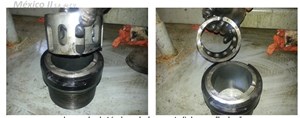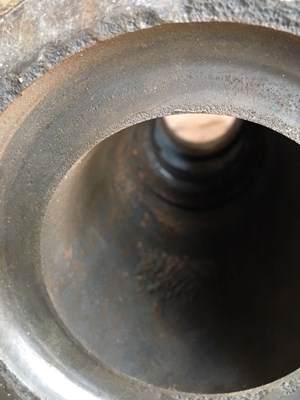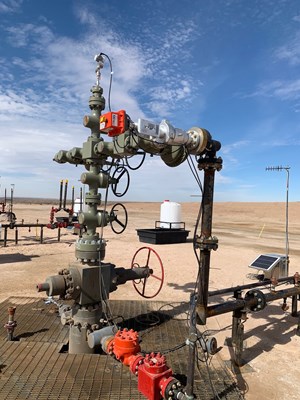Sponsored Content: One size does not fit all
In a fast-paced, cost-conscious oil and gas industry, OEM groups seek standardization and efficiencies through commodity manufactured valves. These products provide the availability and utility demanded by end users to adequately support operational needs. One variable difficult to fit into this “commodity mindset” is the choke valve.
A choke valve controls flow rate and reduces pressure for processing of produced fluids further downstream. As a dynamic function, several critical variables must be evaluated during the choke selection process. Selection of the appropriate type and size of choke heavily contributes to the overall performance and longevity of not only the choke, but also associated equipment.
Choke selection criteria:
- Working Pressure and Temperature
- Inlet/Outlet Connections: Type, Size, etc.
- Nominal Body Size
- Trim Type: Tapered Needle, Cage/Sleeve, Rotating Disc, Multi-Stage, Positive Bean, etc.
- Means of Operation: Manual or Remotely Actuated
- Service Conditions: Corrosive, Abrasive, Sour
- Flow Media: Oil, Gas, Water, Specific Gravity, etc.
- Flow Rates: Maximum, Minimum and Normal
- Design and Quality Specifications: API, ANSI, etc.
These myriad variables, coupled with differing choke models from various industry manufacturers across several decades, can influence a desire to simply employ a “one size fits all” solution to choke application needs. However, such a solution does not exist. Therefore, expertise in the design, manufacturing and performance of choke valves is required to support the operational needs of the client.
CORTEC has steadily positioned itself as an industry leader in choke technology with an unrivaled knowledge base and model diversity across a range of applications. From wellhead production use to drilling and extreme service operations, our experience and field proven choke solutions will suit virtually any need. Selecting the proper solution for a given application is critical to avoiding costly downtime, and consistent, quality manufacturing with precise tolerances, utilization of quality materials and adherence to stringent industry standards cannot be overstated.
Why does each choke application need to be evaluated independently?
Specifying the appropriate choke size and model is critical to operational success. Most choke-related problems are a result of improper choice of orifice size and/or trim style. These choices can result in severe service conditions such as erosion, noise and cavitation, which can cause catastrophic effects. These could include destruction of the equipment or exposure of processing fluids and pressures to the atmosphere affecting the wellbeing of personnel, environment and operational surroundings. This could be as mild as a leak, or as catastrophic as a fatality or environmental pollution event. CORTEC’s engineering team is equipped with field experience, proven calculations and analytical tools to guide end users to avoid such mistakes.
Examples of Improper Model Selection:
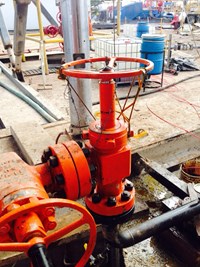
Scenario 1; Location: Colombia
Images below are another OEM choke in service operating 2” needle trim at a 36/64” orifice setting, equating to approximately 5% open. With the trim barely cracked, the choke was vibrating itself closed. CORTEC’s sizing software determined that ¾” needle trim would be optimal in this situation and the client accepted the recommendation and alleviated further issues by allowing the choke position to operate within an intermediate range of flow capacity. CORTEC generally selects chokes to operate between 20-80% of valve travel, but no more than 10-85% max is recommended. Operating them outside of this range often results in significant performance issues.
Scenario 2; Location: Mexico
Utilizing a choke with 4” trim on a manifold, this carbide cage broke due to being significantly oversized for the client’s application. Upon evaluation by CORTEC, it was discovered the choke was operating at only 5-8% open and causing excessive vibration. In this case the optimal trim size would fall between 1.5” to 2” to operate within the targeted position range. CORTEC was able to work with the client to identify smaller choke model options and reduced trim offerings avoiding future premature trim failure.
Scenario 3; Location: Pakistan
The customer purchased a choke assembly with an alloy steel body and bonnet. During service, the choke was leaking from the flange seal areas. After a full review, CORTEC determined there was a high amount of CO2 (8%) present, causing pitting in the alloy steel material at an accelerated rate. The team recommended using corrosion resistant materials to combat the CO2 levels present. The result of proper material selection in this case increased service life and reduced overall operational costs for the end user.
How should I evaluate choke performance over the life of an operation?
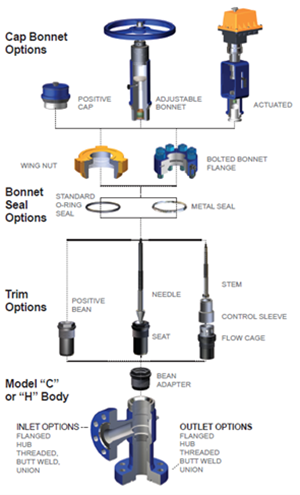
Equipment adaptation required throughout the life of a well should also be considered. As a well’s reserves deplete, flow rates and pressures will exhibit meaningful changes, which may call for modifications to the choke configuration. These changes can include alterations to the trim size and/or type, as well as changes to the actuation methods being utilized. CORTEC has worked alongside many clients to implement greater levels of automation, as economic considerations drive end users to operate more wells from a remote, central location. These upgrades can often be performed with a common choke body by swapping the bonnet assembly. The benefits in reduced travel and time are attractive to the bottom line.
Examples of in the Field Equipment Adaptation:
Scenario 1; Location: West Texas
Shown here is a sampling of 53 manual choke assemblies that were converted to electric actuation to streamline production for an operator. This conversion from a manual to an electronic, remotely operable design will allow for fewer personnel and real-time assessment to manage flow rates, thus reducing OPEX and increasing profits.
Scenario 2; Location: Middle East
CORTEC was approached by a client to evaluate flow conditions by an end user seeking higher production rates. Utilizing CORTEC’s sizing software program it was determined that by replacing the existing 1” max orifice needle trim chokes with 2” max orifice external cage type the client could successfully boost production. CORTEC worked with the client to replace 190 chokes while providing a delivery schedule and training plan that complimented their operational needs.
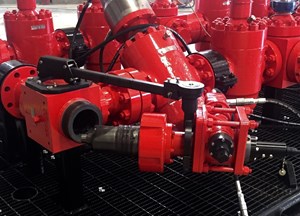
Extreme Service Chokes
In addition to dozens of choke models well-suited to common oil and gas production environments, CORTEC also offers a line of extreme service chokes, ideally designed for highly erosive drilling and well servicing operations. These designs are far more robust and incorporate many field-friendly maintenance features to aid end users during operations. These features include dual sided trim for increased life usage, gantry systems for removing bonnet assemblies with the chokes installed, plus a host of purpose-designed service tools to enhance the end user experience.
Extreme Service Choke Design Considerations:
While sizing of the choke and trim orifice is still critically important, extreme service chokes have greater emphasis placed on the overall operational aspects of the design. Some applications simply bleed off pressure, while others require greater precision of flow rate and/or pressure control. Varying from manual, double-acting pistons or a host of gear driven options, flow conditions and usage durations contribute heavily to maintenance requirements, including frequency of component change out. Understanding manifold piping system design and how to navigate such issues up front will pay dividends to the end user throughout the life of the equipment. Whether a 1.5” orifice hydraulic piston choke for bleeding off a high-pressure vessel or a 6” orifice electric motor driven choke for a high flow rate MPD system, CORTEC is well versed in navigating this selection process.
Conclusion
The world of choke design is diverse and ever-changing. End users can understandably become frustrated when seeking simple solutions, but experience has shown that commercial and commodity driven selection will not work in all situations. Many corporate-minded manufacturers lack the true product focus and adaptability to properly support their clients’ needs. CORTEC is uniquely positioned as a choke-focused manufacturer, fully committed to the extensive options and resources that effort entails. Our designs are proudly made within our U.S. facilities, licensed to API specifications 6A and 16C for choke manufacture.
Related Articles- Coiled tubing drilling: A strategic enabler for mature field redevelopment (December 2025)
- Shale: Sorry Monte Python, I’m not dead yet (December 2025)
- “Drill, Baby, Drill”— Hmmm…? (December 2025)
- Recovering more from mature fields: How technology and digital are changing the game (December 2025)
- FlexRobotics hits the Permian: H&P’s robotic rig makes its field debut (December 2025)
- From injection to insight: Tracing efficiency in surfactant huff and puff (November 2025)
- Subsea technology- Corrosion monitoring: From failure to success (February 2024)
- Applying ultra-deep LWD resistivity technology successfully in a SAGD operation (May 2019)
- Adoption of wireless intelligent completions advances (May 2019)
- Majors double down as takeaway crunch eases (April 2019)
- What’s new in well logging and formation evaluation (April 2019)
- Qualification of a 20,000-psi subsea BOP: A collaborative approach (February 2019)

